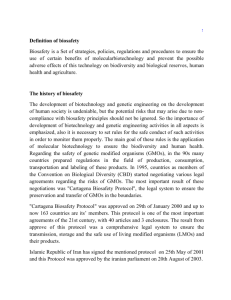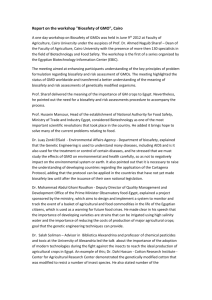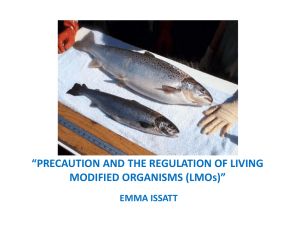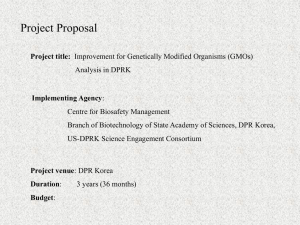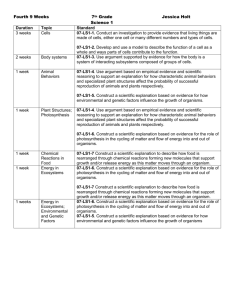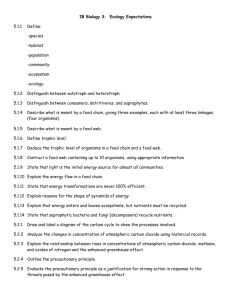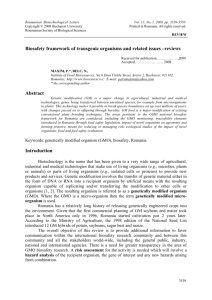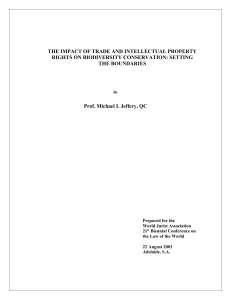DOC - Europa
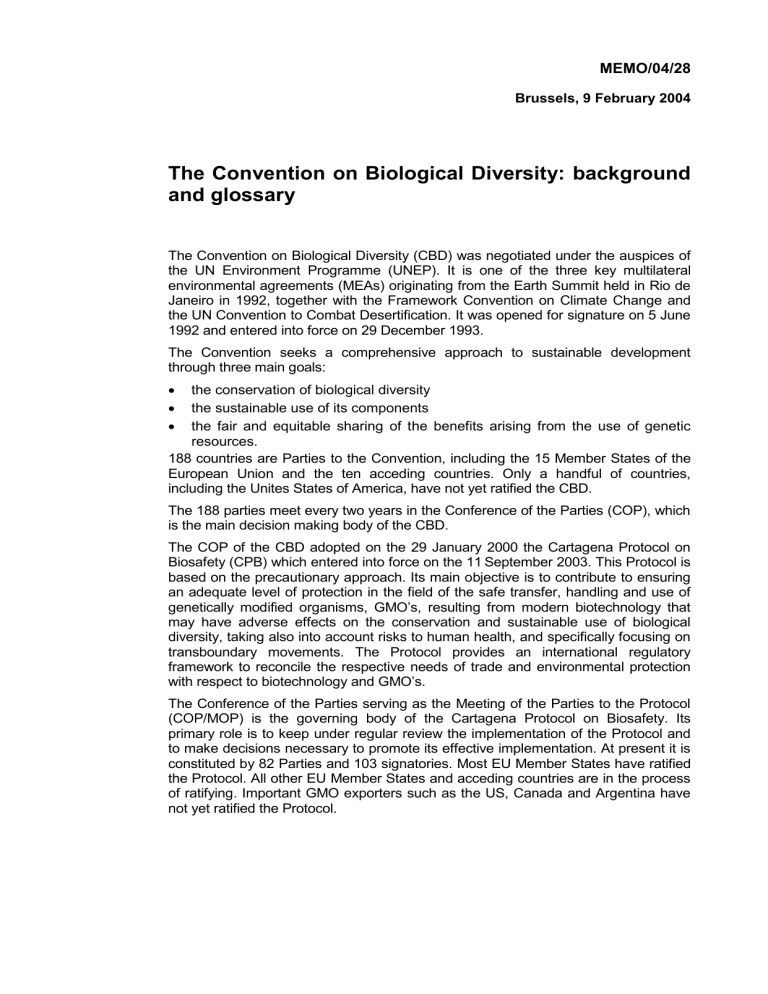
MEMO/04/28
Brussels, 9 February 2004
The Convention on Biological Diversity: background and glossary
The Convention on Biological Diversity (CBD) was negotiated under the auspices of the UN Environment Programme (UNEP). It is one of the three key multilateral environmental agreements (MEAs) originating from the Earth Summit held in Rio de
Janeiro in 1992, together with the Framework Convention on Climate Change and the UN Convention to Combat Desertification. It was opened for signature on 5 June
1992 and entered into force on 29 December 1993.
The Convention seeks a comprehensive approach to sustainable development through three main goals:
the conservation of biological diversity
the sustainable use of its components
the fair and equitable sharing of the benefits arising from the use of genetic resources.
188 countries are Parties to the Convention, including the 15 Member States of the
European Union and the ten acceding countries. Only a handful of countries, including the Unites States of America, have not yet ratified the CBD.
The 188 parties meet every two years in the Conference of the Parties (COP), which is the main decision making body of the CBD.
The COP of the CBD adopted on the 29 January 2000 the Cartagena Protocol on
Biosafety (CPB) which entered into force on the 11 September 2003. This Protocol is based on the precautionary approach. Its main objective is to contribute to ensuring an adequate level of protection in the field of the safe transfer, handling and use of genetically modified organisms, GMO ’s, resulting from modern biotechnology that may have adverse effects on the conservation and sustainable use of biological diversity, taking also into account risks to human health, and specifically focusing on transboundary movements. The Protocol provides an international regulatory framework to reconcile the respective needs of trade and environmental protection with r espect to biotechnology and GMO’s.
The Conference of the Parties serving as the Meeting of the Parties to the Protocol
(COP/MOP) is the governing body of the Cartagena Protocol on Biosafety. Its primary role is to keep under regular review the implementation of the Protocol and to make decisions necessary to promote its effective implementation. At present it is constituted by 82 Parties and 103 signatories. Most EU Member States have ratified the Protocol. All other EU Member States and acceding countries are in the process of ratifying. Important GMO exporters such as the US, Canada and Argentina have not yet ratified the Protocol.
The first meeting of the Cartagena Protocol on Biosafety (MOP1) will be held from the 23 to 27 February, also in Kuala Lumpur. The issues to be addressed by this meeting include: information sharing via the Biosafety Clearing-House; capacitybuilding; liability and redress; compliance; and handling, transport, packaging and identification of living modified organisms. It is also expected that the meeting will adopt a medium term programme of work specifying the issues to be addressed by
COP-MOP from its second to its fifth meeting.
Glossary
Biodiversity : short for biological diversity, it is the variability among living organisms from all sources including, inter alia, terrestrial, marine and other aquatic ecosystems and the ecological complexes of which they are part; this includes diversity within species, between species and of ecosystems.
Biological resources : includes genetic resources, organisms or parts thereof, populations, or any other biotic component of ecosystems with actual or potential use or value for humanity.
Ecosystem : a dynamic complex of plant, animal and micro-organism communities and their non-living environment interacting as a functional unit. This can range from a small pond to a complete forest or ocean.
Habitat : the place or type of site where an organism or population naturally occurs.
Genetic resources : any material of plant, animal, microbial or other origin containing functional units of heredity with actual or potential value.
Country of origin of genetic resources : country which possesses those genetic resources in in-situ conditions.
In situ conservation : the conservation of ecosystems and natural habitats and the maintenance and recovery of viable populations of species in their natural surroundings and, in the case of domesticated or cultivated species, in the surroundings where they have developed their distinctive properties.
Ex situ conservation : the conservation of components of biological diversity outside their natural habitats.
Sustainable use : the use of components of biological diversity in a way and at a rate that does not lead to the long-term decline of biological diversity, thereby maintaining its potential to meet the needs and aspirations of present and future generations.
2010 Targets : The Strategic Plan of the CBD adopted at COP6 in The Hague in
2002 includes the target to “significantly reducing the rate of biodiversity loss by
2010”. This target was endorsed by the world leaders at the 2002 World Summit on
Sustainable Development in Johannesburg. The EU has adopted in its Sustainable
Development Strategy, endorsed at the Gothenburg Summit in 2001, the target to halt biodiversity loss by 2010.
Biosafety : protection of biological diversity from potential risks that may be posed by the transfer, handling and use of living modify organisms resulting from modern biotechnology and taking into account risks to human health.
2
Biotechnology : any technological application that uses biological systems, living organisms, or derivates thereof, to make or modify products or processes for specific use.
Living modified organism : any living organism that possesses a novel combination of genetic material obtained through the use of modern biotechnology. This term which is found in the Biosafety protocol is equivalent to Genetically Modified
Organism (GMOs ) in EU legislation.
3
